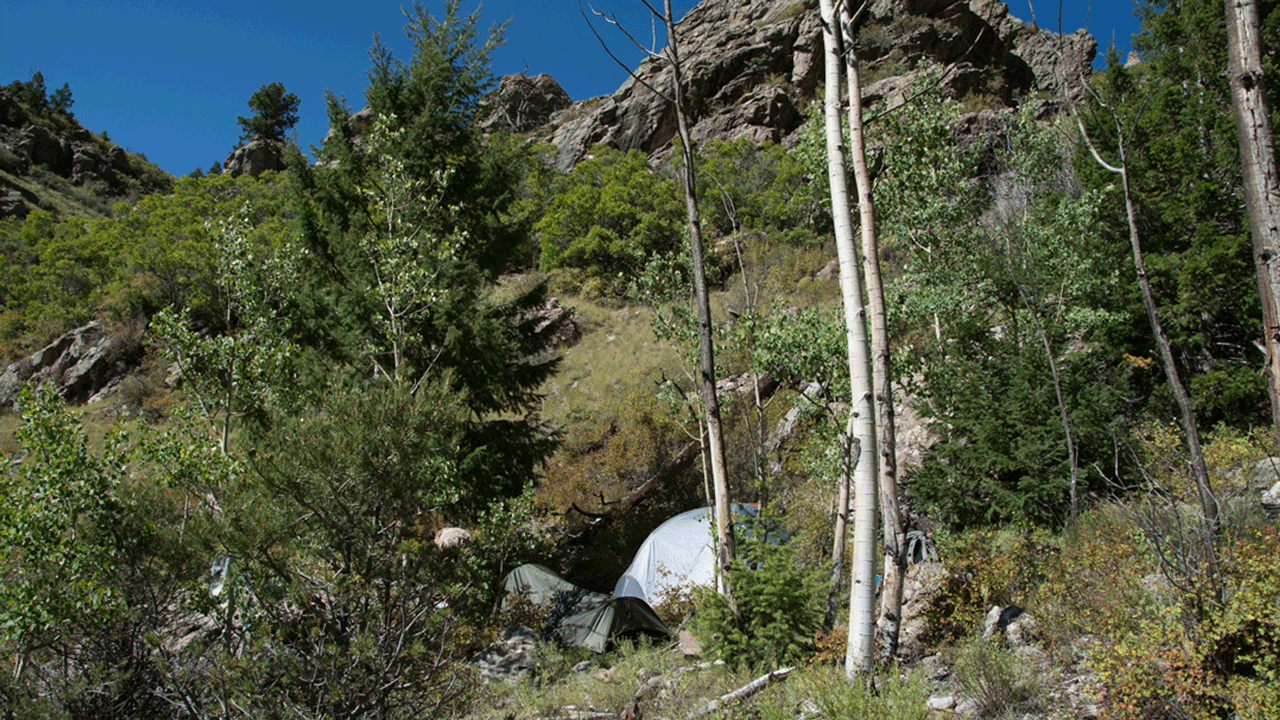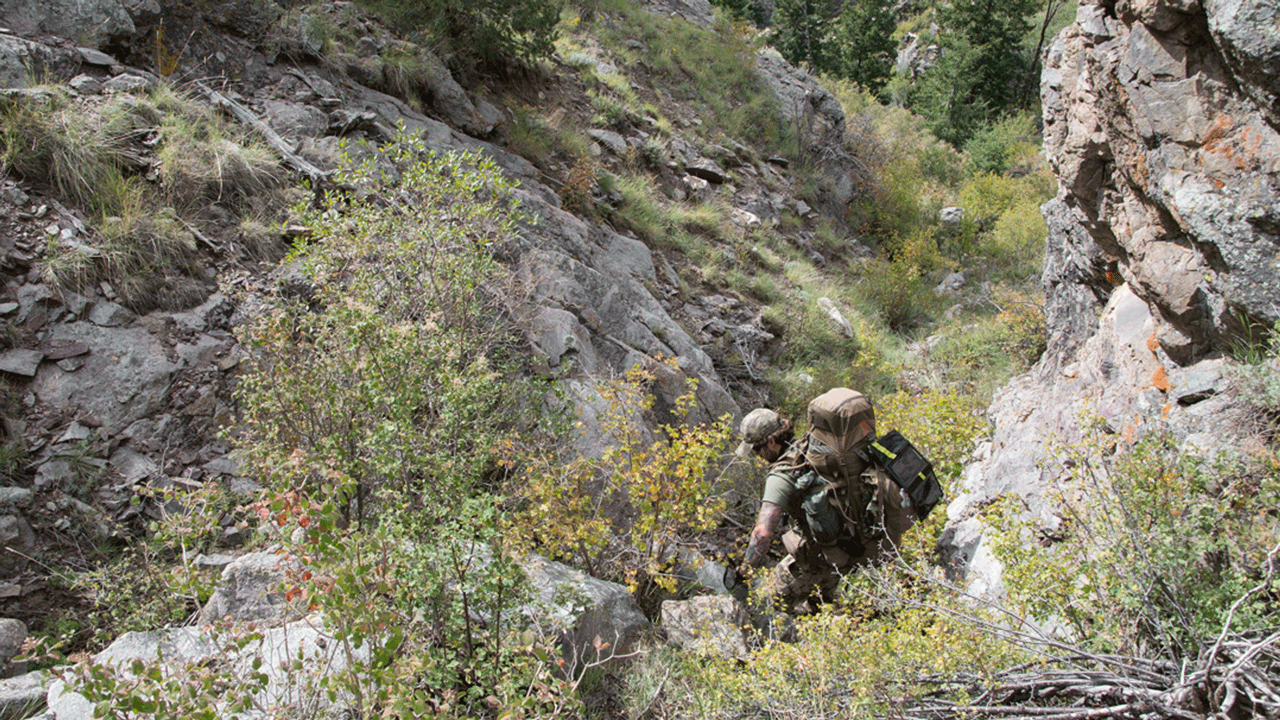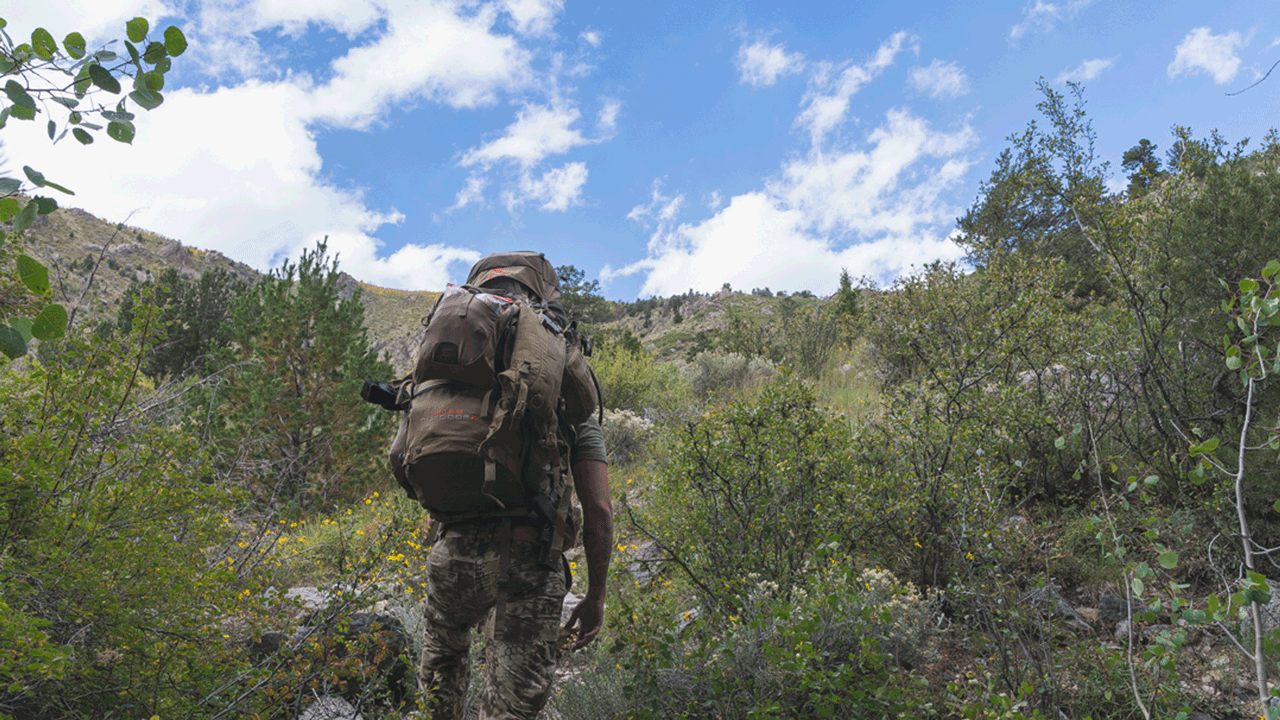by Clayton Holmes
Preparing for a hunt, especially one in a new location, is something I enjoy almost as much as the hunt itself. I don’t want to know what my wife would think if she knew the number of hours spent on Google Earth or critiquing the gear I will take on the trip. Any time you do something for the first time, no matter how much time you spend planning, you are going to have a few things you didn’t adequately prepare for. Here are five things I should have considered or been more prepared for on my first DIY backcountry hunt.
Think Twice Regarding Your Shelter on a DIY Backcountry Hunt
Take a second look at the type of shelter you choose for your DIY backcountry hunt. It’s not as simple as choosing between a little extra room in your tent or being ultralight. Could it snow? Will it be relatively dry or humid? In my case, I didn’t consider the impact the terrain would have on my shelter setup. This past archery elk season I used a roomy two person backpacking tent. I never considered I might not be able to find a single flat spot large enough for my tent. A few restless nights and a punctured sleeping pad later, I have vowed to never make that mistake again.

The flattest spot on the mountain wasn’t so flat. A small, single man shelter like my hunting partner wisely chose would have been much more convenient on this hunt.
High Quality H20
I appreciate the water from my kitchen sink much more today than I did a few years ago. Even if you are hunting from the truck, you should have a method to filter water if needed while in the mountains. Whichever water treatment option you choose, test it out at least a few times before season and make sure you like using that method. After a few days of dropping several hundred feet in elevation for water, I realized how much I took water for granted on a daily basis. There are several methods including purification tablets, filters, or a Steripen. Each option has its pros and cons and will vary based on your hunting style.

It quickly became a chore navigating this terrain each time we needed to filter water. We eventually moved camp to lower on the mountain.
Confirm Road Conditions
Each time I’ve hunted the west, road access and road conditions frequently haven’t matched my expectations. It has been very common for me to show up to a “passenger road” and find I’m not making it down the road to my predetermined location without an ATV. It is also just as common to show up to walk into a closed road and realize the road is open and heavily used. Once you have a couple areas in mind, call the forest service and confirm the road conditions and road access match your maps. This could save you a lot of time and frustration on your hunt. The last thing you want is to start your hunt by getting the maps back out to find a new access point for your hunt area.

Google Earth did this ridge no justice when we were researching prior to our hunt. Always expect the terrain to be steeper than it looks on the map.
Eat It Before the Hunt
Prior to my first backcountry hunt, I did some research online for backpacking meals and ordered some that sounded good and had the best reviews. I never tried any of them before the hunt. Frankly, I thought they cost too much to try one before the actual hunt. While they weren’t all bad there were several that were pretty terrible. I love to eat and couldn’t come close to finishing a few of them. My hunting partner had the same issue. It doesn’t help that a common problem in the backcountry is losing your appetite between the exertion and altitude. It is worth it to try a few meal options before the hunt and pick a few you know you will enjoy. You need to be able to increase your caloric intake during the hunt not decrease it.
Last year, I dehydrated all of my meals before the hunt. I highly recommend this option. As we made some of my favorite meals in the weeks leading up to the hunt, I would dehydrate the leftovers. I initially worried about trying to do this myself, but I had no issues dehydrating meals. They turned out great on the hunt. You will want to do a little research to pick a dehydrator (if you don’t already have one) and learn what foods dehydrate well. It will be well worth it for the added comfort of a familiar meal while on the mountain.
Beef Up Your Backup Plans
Chances are when you arrive to your planned hunting area it is not going to look exactly like you expected. Even after a number of years of hunting the west, I still always underestimate the size of the country. There will be spots you quickly scratch off your list and other spots that look much better in person than they did during your online research. You cannot have too many backup plans on your hunt. Fortunately, there are some great ways to collect and store data you collected during your summer e-scouting.
A mapping system is absolutely a must-have item on a backcountry hunt. A paper map is a nice backup, but I cannot think of any reason not to go into the hunt using a mapping app for your phone or GPS chip like the onX Hunt program. I used the chip for the GPS my first year and the mobile app since that time. You can store waypoints and map layers such as trails, roads, public/private boundaries, and historical wildfire data. This comes in especially useful when you turn to a backup plan or area that you may not have spent as much time researching in the summer. Your mapping system will be one of your most used pieces of equipment. Make sure you take the time in the offseason to learn how to use it effectively so that you can get everything you can out of it on the hunt.
Conclusion
I hope you learn from the mistakes I made on my first DIY backcountry hunt. If you don’t take anything else from these specific examples, I hope you at least see the overall theme. When you are in the backcountry there are no “quick trips” back to the truck. You have to rely on the tools you have with you and your ability to use them. The more familiar you are with your equipment the more comfortable and efficient you can be on your hunt. The more efficient you are with that equipment the more time you have to focus on the hunt.





